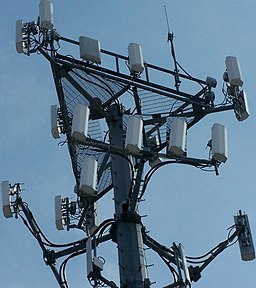5G networks explained
Updated: Wed, 08 Jul 2020 by Rad
By 2024, there will be over a billion 5G subscribers. 5G New Radio (NR) using Non-Standalone (NSA) networks are already live. Now, Communications Service Providers (CSPs) are preparing to move to Standalone (SA) architectures to deliver the full benefits of 5G.
"While earlier generations of cellular technology (such as 4G LTE) focused on ensuring connectivity, 5G takes connectivity to the next level by delivering connected experiences from the cloud to clients. 5G networks are virtualized and software-driven, and they exploit cloud technologies."
Cisco, https://www.cisco.com/c/en/us/solutions/what-is-5g.html
Benefits
Connected vehicles -- with 5G comes unprecedented speed and connectivity—the kind needed to make autonomous, or self-driving, cars a reality. 5G networks have what it takes to allow faster-than-ever communication and data processing between vehicles, networks, infrastructure and even pedestrians.
Smartphones -- the main advantage of 5G over 4G for users is better coverage, i.e., signals will hit previously hard-to-reach places with connection guaranteed as part of service plans.
Streaming and entertainment -- 5G offers a striking advantage over previous technologies, with virtually unlimited capacity and short lag times. In addition to better quality and considerably faster streaming, 5G promises revolutionary immersive experiences, including multisensory digital content thanks to increased capacity that will support technologies like virtual reality, augmented reality and 3D.
Drawbacks
Less coverage -- An increased bandwidth will mean less coverage. One of the key advantages of 3G cell towers was that they could cover immense territory with relatively few cells. This is because the network did not require as much bandwidth, meaning networks had to deploy fewer cells. More cell towers will be required to produce this immense bandwidth because the cells are not able to cover as much space as a 3G or 4G cell.
Healthcare -- In healthcare, 5G technology and Wi-Fi 6 connectivity will enable patients to be monitored via connected devices that constantly deliver data on key health indicators, such as heart rate and blood pressure.
The radio frequency may become a problem -- Radios, cell towers, and even satellites communicate using radio frequencies. Frequency is measured in Hz and the radio frequencies tend to operate in the GHz range. Early reports on the 5G network indicate that this network is going to transmit its data in the range of around 6 GHz. Unfortunately, this radio frequency range is already crowded by other signals, such as satellite links.
Conspiracy theories -- People have argued that the smaller wavelengths used in each new generation of mobile phone infrastructure have never been tested, and therefore we are guinea pigs for this technological experiment.

Current state (2020)
5G will have an impact similar to the introduction of electricity or the car, affecting entire economies and benefiting entire societies.
The launch of 5G was officially slated for 2020, but its development has been well underway for some time with many companies having already introduced early versions of 5G devices, applications and networks. However, it still may take a few years before we see the full potential and benefits of 5G.
By 2025, 5G networks are likely to cover one-third of the world's population. The impact on the mobile industry and its customers will be profound. 5G will account for as many as 1.2 billion connections by 2025.
5G networks are expected to generate $13.2 trillion in global sales activity by 2035. To make this easier to digest, here are the five industries which stand to benefit the most.
- Manufacturing
- Information and Communication
- Wholesale and Retail Sales
- Public Services
- Construction
< back to glossary
5G Networks - resources from around the web
- 5G explained
- 5G benefits for consumers and carriers
- The Advantages and Disadvantages of a 5G Network
- What's 5G, And Why Are People So Scared of It?
- Visualized: Where 5G Will Change The World
- 5G Global Launches & Statistics
- What Is 5G? -- An article by Cisco
- OOKLA 5G MAP™ -- The interactive Ookla 5G Map tracks 5G rollouts in cities across the globe. Updated weekly from verified public sources and Ookla data.